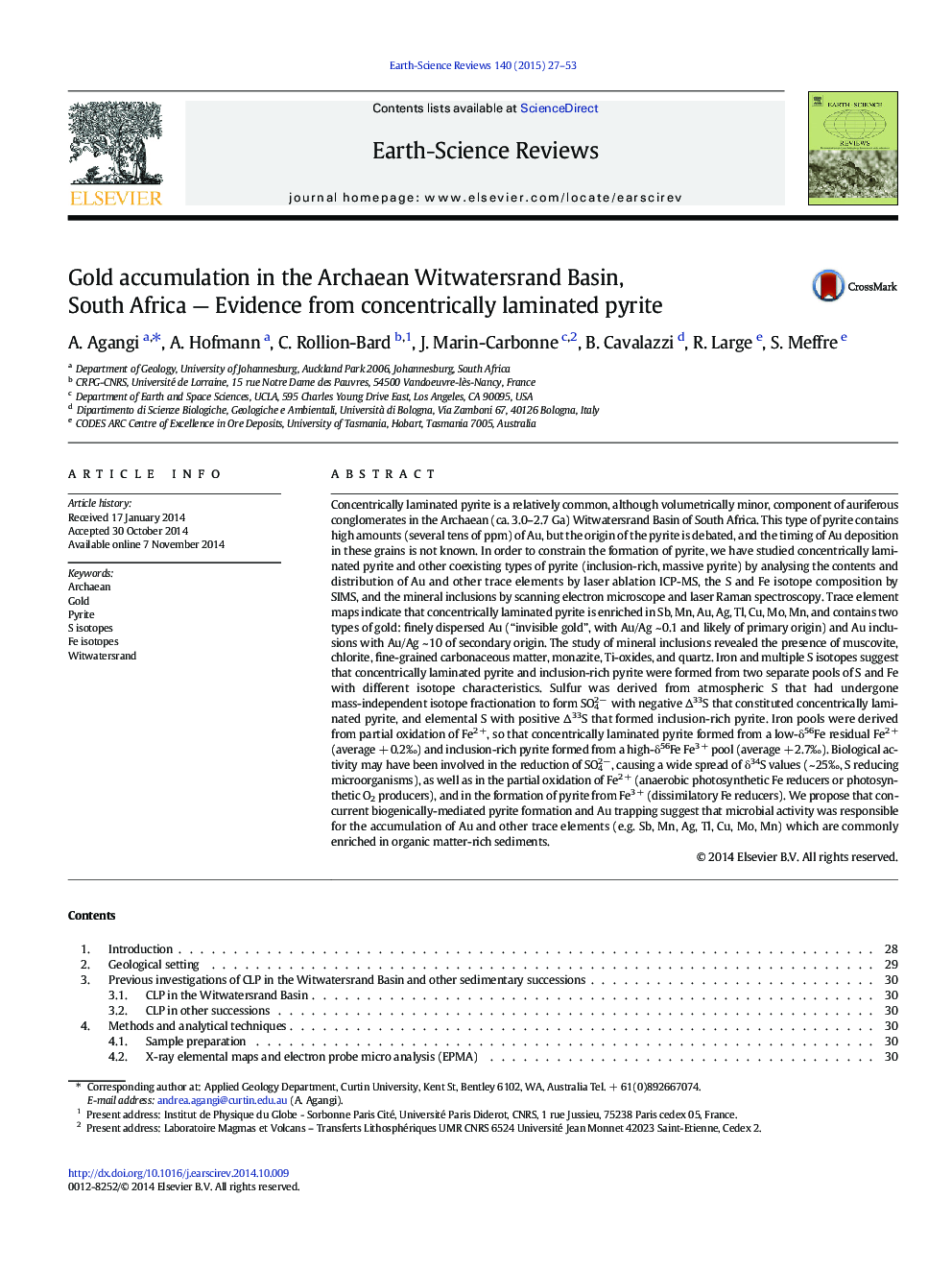| کد مقاله | کد نشریه | سال انتشار | مقاله انگلیسی | نسخه تمام متن |
|---|---|---|---|---|
| 4725658 | 1639962 | 2015 | 27 صفحه PDF | دانلود رایگان |

Concentrically laminated pyrite is a relatively common, although volumetrically minor, component of auriferous conglomerates in the Archaean (ca. 3.0–2.7 Ga) Witwatersrand Basin of South Africa. This type of pyrite contains high amounts (several tens of ppm) of Au, but the origin of the pyrite is debated, and the timing of Au deposition in these grains is not known. In order to constrain the formation of pyrite, we have studied concentrically laminated pyrite and other coexisting types of pyrite (inclusion-rich, massive pyrite) by analysing the contents and distribution of Au and other trace elements by laser ablation ICP-MS, the S and Fe isotope composition by SIMS, and the mineral inclusions by scanning electron microscope and laser Raman spectroscopy. Trace element maps indicate that concentrically laminated pyrite is enriched in Sb, Mn, Au, Ag, Tl, Cu, Mo, Mn, and contains two types of gold: finely dispersed Au (“invisible gold”, with Au/Ag ~ 0.1 and likely of primary origin) and Au inclusions with Au/Ag ~ 10 of secondary origin. The study of mineral inclusions revealed the presence of muscovite, chlorite, fine-grained carbonaceous matter, monazite, Ti-oxides, and quartz. Iron and multiple S isotopes suggest that concentrically laminated pyrite and inclusion-rich pyrite were formed from two separate pools of S and Fe with different isotope characteristics. Sulfur was derived from atmospheric S that had undergone mass-independent isotope fractionation to form SO42− with negative Δ33S that constituted concentrically laminated pyrite, and elemental S with positive Δ33S that formed inclusion-rich pyrite. Iron pools were derived from partial oxidation of Fe2 +, so that concentrically laminated pyrite formed from a low-δ56Fe residual Fe2 + (average + 0.2‰) and inclusion-rich pyrite formed from a high-δ56Fe Fe3 + pool (average + 2.7‰). Biological activity may have been involved in the reduction of SO42−, causing a wide spread of δ34S values (~ 25‰, S reducing microorganisms), as well as in the partial oxidation of Fe2 + (anaerobic photosynthetic Fe reducers or photosynthetic O2 producers), and in the formation of pyrite from Fe3 + (dissimilatory Fe reducers). We propose that concurrent biogenically-mediated pyrite formation and Au trapping suggest that microbial activity was responsible for the accumulation of Au and other trace elements (e.g. Sb, Mn, Ag, Tl, Cu, Mo, Mn) which are commonly enriched in organic matter-rich sediments.
Journal: Earth-Science Reviews - Volume 140, January 2015, Pages 27–53